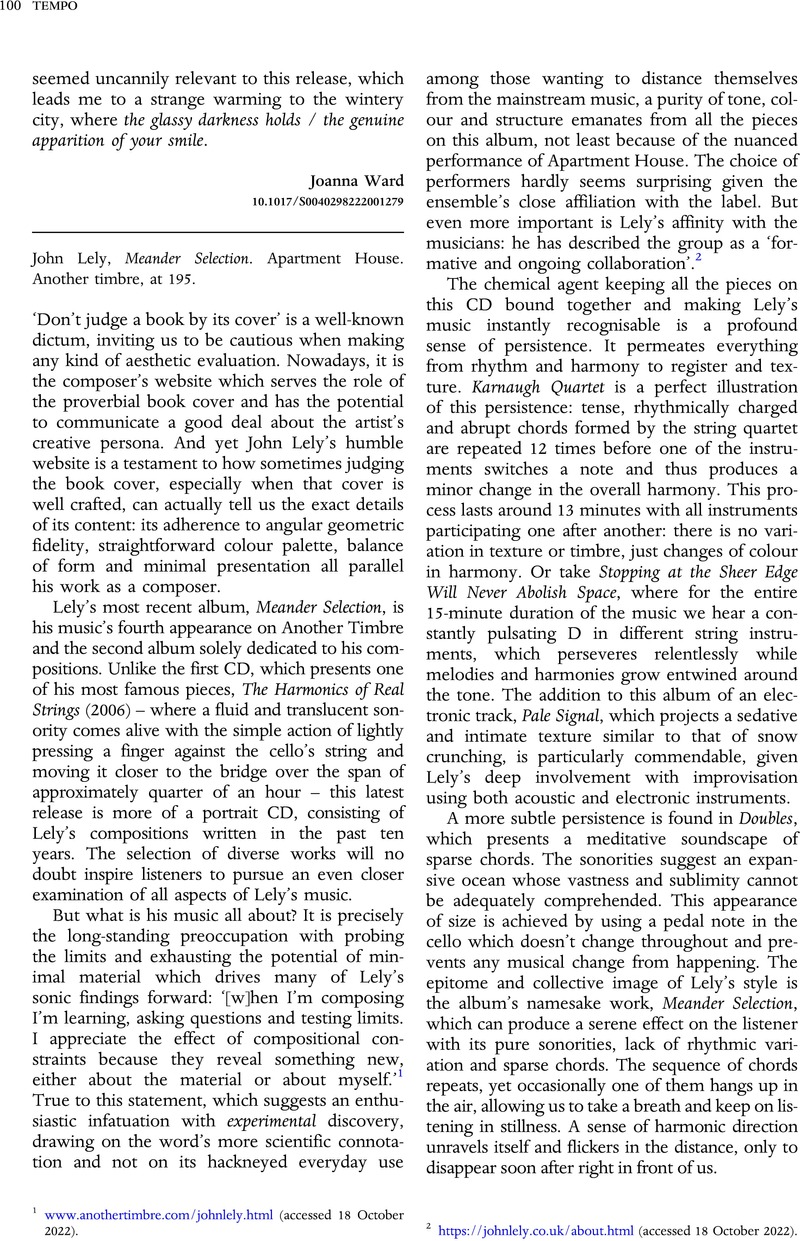No CrossRef data available.
Article contents
John Lely - John Lely, Meander Selection. Apartment House. Another timbre, at 195.
Review products
John Lely, Meander Selection. Apartment House. Another timbre, at 195.
Published online by Cambridge University Press: 03 April 2023
Abstract
An abstract is not available for this content so a preview has been provided. Please use the Get access link above for information on how to access this content.

- Type
- CDs AND DVDs
- Information
- Copyright
- Copyright © The Author(s), 2023. Published by Cambridge University Press
References
1 www.anothertimbre.com/johnlely.html (accessed 18 October 2022).
2 https://johnlely.co.uk/about.html (accessed 18 October 2022).



